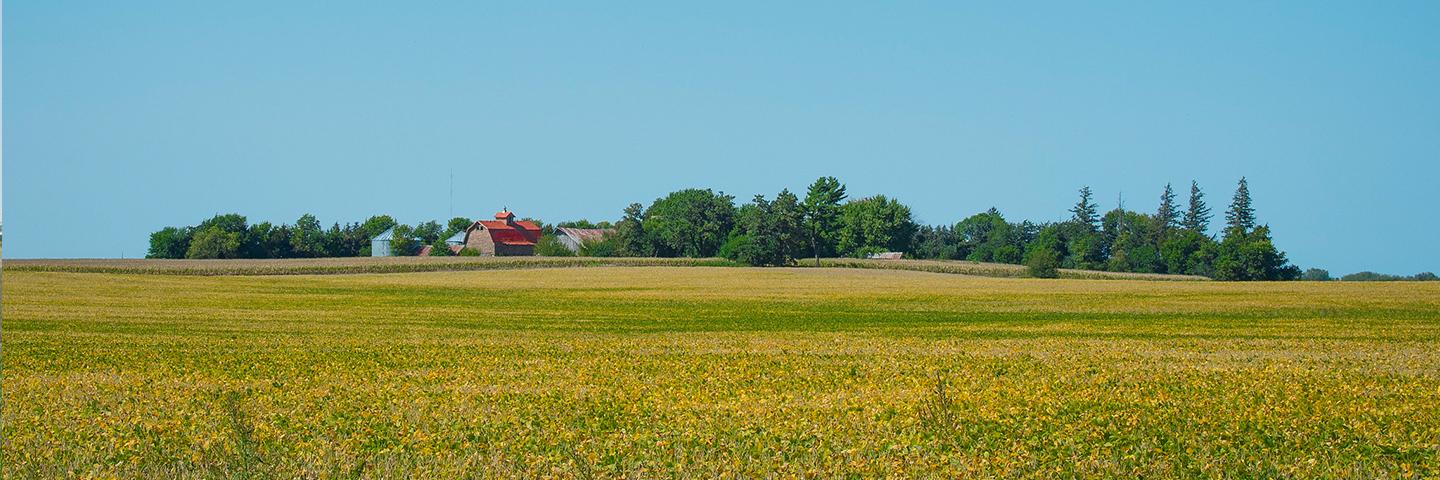
Conservation Effects Assessment Project (CEAP) cropland assessments quantify the effects of voluntary conservation efforts across the nation’s cropland at both regional and national scales.
About CEAP Cropland Assessments
Through CEAP, the Natural Resources Conservation Service (NRCS) quantifies trends in cropland conservation practices, and associated outcomes, over time. This data empowers a diversity of customers to evaluate conservation successes, identify potential improvements, and set targeted, measurable goals for the future.
Cropland farmers may leverage CEAP findings to inform on-the-ground decisions related to conservation tillage, cover crops, irrigation, nutrient management, and many other conservation actions. NRCS and conservation partners equally rely on CEAP assessments to evaluate regional and national conservation outcomes and to guide targeted, data-driven prioritization of future efforts and initiatives.
CEAP cropland assessments are developed using confidential farmer surveys coupled with modeling. Data sources for CEAP models include the National Resources Inventory and records from both NRCS and Farm Service Agency offices at USDA Service Centers. Additional details on this sampling and modeling approach are available on the CEAP Frequently Asked Questions page.
About the 2024 CEAP Survey
If you’re a farmer or other operator, you may soon be asked to participate in a survey to gather in-depth information about the use of conservation practices on cultivated cropland.
The 2024 Conservation Effects Assessment Project (CEAP) Survey is a joint effort between USDA’s Natural Resources Conservation Service (NRCS) and National Agricultural Statistics Service (NASS). NASS will visit nearly 12,000 operators across the contiguous U.S. in August and September to determine survey eligibility. Surveying will be conducted into spring 2025.
This is the first of three years of surveys to be conducted by NASS. NASS will publish a Highlights release with a survey overview, methodology, and general data items after the CEAP Survey is complete for the 2024, 2025, and 2026 surveying years. Once surveying is complete, NRCS will combine the data with information from the National Resources Inventory, NRCS field staff, and multiple data sources to estimate environmental and management outcomes of conservation on cultivated cropland. NRCS will then publish findings as a CEAP Cropland Assessment report that shares trends in conservation practices and the associated environmental and management outcomes of conservation across the nation’s cultivated cropland.
Information provided to NASS and analyzed by NRCS is kept confidential, as required by federal law. The agencies only publish data in aggregate form, ensuring that no individual respondent or operation can be identified.
Visit nass.usda.gov/go/ceap to learn more about the 2024 CEAP Survey.
CEAP Cropland Publications

Latest CEAP National and Regional Reports
The below publications provide data and associated insights on the effects of voluntary conservation across croplands at both national and regional scales. Categories including national reports and regional reports, including a link to the CEAP II Regional Reports page.
CEAP II Regional Reports
- Atlantic and Gulf Coastal Plains
- California Coastal
- East Central
- Lower Mississippi and Texas Gulf Coast
- North Central and Midwest
- Northeast
- Northern Plains
- Northwest
- South Central
- Southern and Central Plains
- Southwest
National Reports
- Conservation Practices on Cultivated Cropland: A Comparison of CEAP I and CEAP II Survey Data and Modeling, 2022 (26.9 MB)
- Effects of Conservation Practices on Water Erosion and Loss of Sediment at the Edge of the Field, 2017 (3.8 MB)
- Effects of Conservation Practices on Mitigation of Pesticide Loss and Environmental Risk, 2017 (3.2 MB)
- Effects of Conservation Practices on Phosphorus Loss from Farm Fields, 2017 (3.4 MB)
- Effects of Conservation Practices on Nitrogen Loss from Farm Fields, 2017 (4.4 MB)
- Model Simulation of Soil Loss, Nutrient Loss and Soil Organic Carbon Associated with Crop Production, 2006
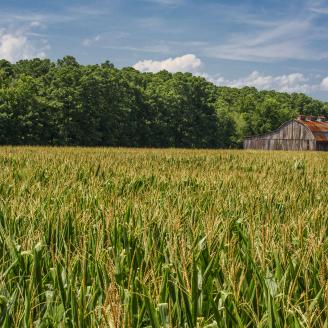
Reports and Articles
The below publications provide data and associated insights on the effects of voluntary conservation across croplands at both national and regional scales. Categories including regional reports and other articles. Publications within each category are organized in descending order by date.
Regional Reports
- Western Lake Erie Basin Special Study, 2017 (2.3 MB)
- Western Lake Erie Basin Special Study, 2016 (2.0 MB)
- Texas Gulf Basin, 2015 (7.6 MB)
- Pacific Northwest Basin, 2014 (5.7 MB)
- Souris-Red-Rainy Basin, 2014 (6.1 MB)
- South Atlantic Gulf Basin, 2014 (5.8 MB)
- Delaware River Basin, 2014 (6.0 MB)
- Arkansas-White-Red Basin, 2013 (12.3 MB)
- Lower Mississippi River Basin, 2013 (7.8 MB)
- Missouri River Basin, 2012 (7.1 MB)
- Ohio-Tennessee River Basin, 2012 (10.9 MB)
- Great Lakes Region, 2011 (9.7 MB)
- Chesapeake Bay, 2011 (10.2 MB)
- Chesapeake Bay Special Study, 2013 (6.1 MB)
- Upper Mississippi River Basin, 2010 (5.3 MB)
Other Articles
- Plant Parameterization and APEXgraze Model Calibration and Validation for US Land Resource Region H Grazing Lands, 2023, Agricultural Systems (6.8 MB)
- Harmful Algal Blooms and Hypoxia in the United States: A Report on Interagency Progress and Implementation, 2018, NOAA
- Are Harmful Algal Blooms Becoming the Greatest Inland Water Quality Threat to Public Health and Aquatic Ecosystems, 2016, Environmental Toxicology and Chemistry
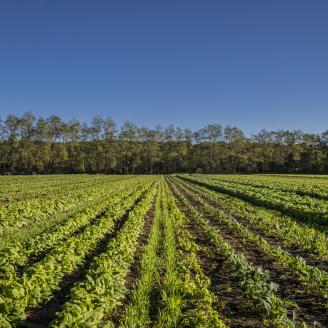
Fact Sheets: Conservation Insights
The below includes Conservation Insight fact sheets on the effects of voluntary conservation across the nation's cropland.
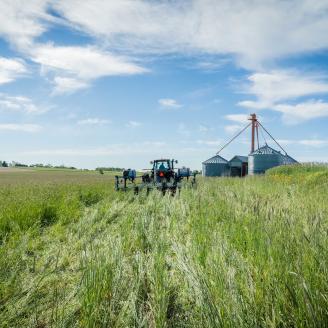
Webinars and Blogs
The below Conservation Outcomes Webinar recordings feature scientists and other subject matter experts speaking on the effects of voluntary conservation across the nation's croplands. Blogs related to CEAP cropland assessments are also included. Both webinars and blogs are organized in descending order by date.
Visit the Conservation Outcomes Webinar Series webpage to access information on upcoming webinars.
Conservation Outcomes Webinars
- July 20, 2023 – Research on the Use of Precision Ag Technologies for Cropland Phosphorus Management: Webinar Recording (Captions Available), Presentation Slides, and Additional Resources One-Pager
- August 25, 2022 – Impact of Cover Crops on Nitrogen and Phosphorus Dynamics: Webinar Recording, Presentation Slides, and Transcript
- April 28, 2022 – Conservation Practices on Cultivated Cropland: A Comparison of CEAP I and CEAP II Survey Data and Modeling: Webinar Recording and Presentation Slides
- June 25, 2020 – Tillage Management and Structural Conservation Practices: CEAP II Report on Changes in Adoption Rates: Webinar Recording
Blogs

Farmer Survey Documents
The below documents provide farmer questionnaires and respondent booklets, in descending order by date, for farmer surveys conducted by USDA’s National Agricultural Statistics Service in support of CEAP cropland assessments.
- 2016 Farmer questionnaire (2.4 MB)
- 2016 Respondent booklet (3.3 MB)
- 2015 Farmer questionnaire (0.9 MB)
- 2015 Respondent booklet (3.3 MB)
- 2014 Farmer questionnaire (0.9 MB)
- 2014 Respondent booklet (0.3 MB)
- 2013 Farmer questionnaire (2.1 MB)
- 2013 Respondent booklet (2.3 MB)
- 2012 Farmer questionnaire (1.1 MB)
- 2012 Respondent booklet (0.8 MB)
- 2011 Farmer questionnaire (0.5 MB)
- 2011 Respondent booklet (0.2 MB)
- 2006 Farmer questionnaire (0.3 MB)
- 2006 Respondent booklet (0.1 MB)
- 2005 Farmer questionnaire (0.7 MB)
- 2005 Respondent booklet (0.1 MB)
- 2004 Farmer questionnaire (0.8 MB)
- 2004 Respondent booklet (0.1 MB)
- 2003 Farmer questionnaire (0.1 MB)
- 2003 Respondent booklet (0.1 MB)
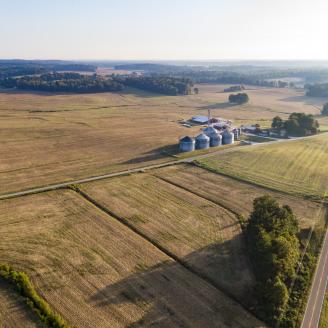
Cropland Modeling Documentation
The below publications provide documentation of Agricultural Policy Extender (APEX) model calibration and validation, as well as processes for preparing data for modeling and criteria for determining thresholds used in reporting for CEAP cropland assessments.
CEAP Cropland Survey Data
- Cultivated Cropland Classification Methodology for Conservation Effects Assessment Project (CEAP) II Analysis and Reporting, 2024
- Conservation Effects Assessment Project (CEAP) Tillage Classification Methodology, 2024
- Sediment and Nutrient Management Level Criteria for Conservation Effects Assessment Project (CEAP) II Analysis and Reporting, 2024
- Statistical Methodology for the CEAP Cropland Farmer National Surveys, 2021 (5.4 MB)
- Transforming Survey Data to APEX Model Input Files, 2009
APEX Model Use and Improvements
- About APEX
- APEX User Manual, 2019 (4.4 MB)
- APEX Model Upgrades, Data Inputs, and Parameter Settings for Use in CEAP Cropland Modeling, 2011 (0.7 MB)
- Modeling Structural Conservation Practices, 2011 (0.2 MB)
- Assumptions and Procedures for Simulating the Natural Vegetation Background Scenario for the CEAP National Cropland Assessment, 2010 (0.5 MB)
- Integrating APEX Output for Cultivated Cropland with SWAT Simulation for Regional Modeling, 2011, Transactions of the ASABE
- Adjustment of CEAP Cropland Survey Nutrient Application Rates for APEX Modeling, 2014 (1.1 MB)
APEX Model Calibration and Validation
- APEX Model Validation for CEAP, 2010 (0.6 MB)
- I_APEX Calibration and Validation Using Research Plots in Tifton, Georgia, 2009 (0.1 MB)
- APEX Calibration/Validation of Water Runoff and Percolation and Herbicide Losses for a Loamy-Sand Coastal Plain Soil, 2013, Transactions of the ASABE
SWAT and HUMUS Model Development, Use, Calibration, and Validation
- The Soil and Water Assessment Tool: Historical Development, Applications, and Future Research Directions, 2007, Transactions of the ASABE
- The HUMUS/SWAT National Water Quality Modeling System and Databases, 2010 (11.6 MB)
- Calibration and Validation of CEAP-HUMUS, 2012 (4.9 MB)
- Manure Loadings Used to Simulate Pastureland and Hay Land in CEAP HUMUS/SWAT Modeling, 2011 (0.5 MB)
- Documentation on Delivery Ratio used for CEAP Crop Modeling for Various River Basins in the United States, 2010 (3.6 MB)
Historical Model Development
- The Agricultural Policy Environmental EXtender (APEX) Model: An Emerging Tool for Landscape and Watershed Environmental Analyses
- Journal Article, 2010, Transactions of the ASABE
- Technical Report, 2009 (2.6 MB)
- Historical Development and Applications of the EPIC and APEX Models, 2005
Pest Management and Pesticides
- Documentation of Changes in IPM Indicator Scoring from Conservation Effects Assessment Project (CEAP) I to CEAP II, 2024
- Pesticide Risk Indicators Used in CEAP Cropland Modeling, 2011 (0.5 MB)
- Pesticide Toxicity Thresholds Derivation and Use in CEAP Cropland Modeling, 2021 (0.3 MB)
- CEAP Pesticide Properties Database, 2021 (0.1 MB)
- CEAP Human and Aquatic Toxicity Database, 2021 (0.5 MB)
Select APEX Related Publications
- Test of APEX for Nine Forested Watersheds in East Texas, 2007, Journal of Environmental Quality
- APEX Feedlot Water Quality Simulation, 2006, Transactions of the ASABE
- Application of APEX For Forestry, 2004, Transactions of the ASABE
- Evaluation of EPIC for Assessing Crop Yield, Runoff, Sediment And Nutrient Losses From Watersheds With Poultry Litter Fertilization, 2005, Transactions of the ASABE
- Reducing Atrazine Losses: Water Quality Implications of Alternative Runoff Control Practices, 2004, Journal of Environmental Quality
- Predicting Soil Erosion for Alternative Land Uses, 2006, Journal of Environmental Quality
- Development of a continuous soil moisture accounting procedure for curve number methodology and its behavior with different evapotranspiration methods, 2007, Hydrological Processes
- Sensitivity Analysis of APEX for National Assessment, 2006, Transactions of the ASABE
- Sensitivity and Uncertainty Analyses of Crop Yields and Soil Organic Carbon Simulated with EPIC, 2005, Transactions of the ASABE
- Modeling the impacts of soil management practices on runoff, sediment yield, maize productivity, and soil organic carbon using APEX, 2008, Soil and Tillage Research
- Impacts of the Sustainable Forestry Initiative Landscape Level Measures on Hydrological Processes, 2004, Water Resources Management
Select HUMUS Related Publications
- Spatial Calibration and Temporal Validation of Flow for Regional Scale Hydrologic Modeling, 2008, Journal of the American Water Resources Association
- Development of an automated procedure for estimation of the spatial variation of runoff in large river basins, 2008, Journal of Hydrology
- Development of a continuous soil moisture accounting procedure for curve number methodology and its behavior with different evapotranspiration methods, 2007, Hydrological Processes
- Hydrologic Evaluation of the Soil and Water Assessment Tool for a Large Tile-Drained Watershed in Iowa, 2006, Transactions of the ASABE
- An Approach for Estimating Water Quality Benefits of Conservation Practices at the National Level, 2005 (0.4 MB)
- Constructing Retrospective Gridded Daily Precipitation and Temperature Datasets for the Conterminous United States, 2008, Journal of Applied Meteorology and Climatology
- Regional estimation of base flow for the conterminous United States by hydrologic landscape regions, 2008, Journal of Hydrology
- Spatial agreement between two land-cover data sets stratified by agricultural eco-regions, 2006, International Journal of Remote Sensing
- Spatial Assessment of Two Widely Used Land-Cover Datasets Over the Continental U.S., 2005, IEEE Transactions on Geoscience and Remote Sensing
CEAP Cropland Highlights
The below highlights represent recent resources and key findings released by CEAP on cropland conservation efforts and outcomes. Visit this webpage frequently to see what's new, or browse the above publications to access a range of published resources from CEAP cropland assessments.
Impact of Cover Crops on Nitrogen and Phosphorus Dynamics
This Conservation Outcomes Webinar highlights the effects of cover crops and reduced tillage practices on nutrient and sediment losses from cropland and associated water quality outcomes. The presenter is Dr. Kenneth Staver, University of Maryland, Wye Research and Education Center.

Ask the Expert: A Q&A on Current Conservation Trends with Brianna Henry
Learn more about the recent shifts in conservation adoption and associated effects published in a new regional report series. Findings are intended to help guide conservation policy and program development and help conservationists, farmers, and ranchers in their conservation decision

CEAP II Regional Reports
Comparison data from farmer surveys conducted from 2013–16 (CEAP II) make it possible to estimate shifts in conservation adoption and effects between the CEAP survey periods, CEAP I (2003–06) and CEAP II.

Conservation Practices on Cultivated Cropland: A Comparison of CEAP I and CEAP II Survey Data and Modeling
NRCS published results from the latest national CEAP cropland assessment in March 2022. This report provides data on national and regional trends in cropland conservation, and associated effects, over time.
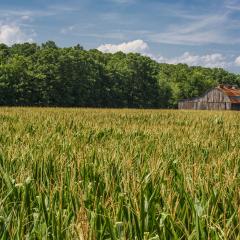
Reduction in Annual Fuel Use from Conservation Tillage
This Conservation Insight provides the latest USDA data on conservation tillage adoption across the United States and highlights potential fuel savings associated with transitioning from continuous conventional tillage to forms of conservation tillage, including continuous no-till.
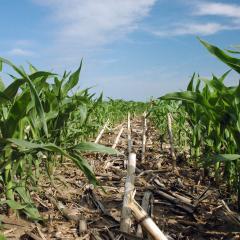
Additional Resources
Conservation Effects Assessment Project (CEAP)
USDA’s Conservation Effects Assessment Project (CEAP) is a multi-agency effort led by the Natural Resources Conservation Service (NRCS) to quantify the effects of conservation practices across the nation’s working lands.
Learn MoreFrequently Asked Questions | Conservation Effects Assessment Project
This webpage provides answers to frequently asked questions about the Conservation Effects Assessment Project (CEAP).
Last Updated: June 9, 2023
Learn MorePublications | Conservation Effects Assessment Project
USDA’s Conservation Effects Assessment Project, CEAP, provides a suite of publications highlighting the effects of voluntary conservation across the nation’s working lands.
Learn MoreConservation Outcomes Webinar Series
The Conservation Outcomes Webinar Series provides key findings, data, and tools to support producers and partners in pursuing voluntary conservation efforts across the nation's working lands.
Learn More
